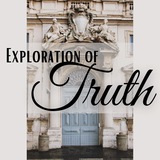astrolabe.pdf
1.9 MB
The Astrolabe by Wilfred de Graaf
“One of the most widely used astronomical instruments over time is the astrolabe. Astrolabes were mainly used for two purposes: for astronomical observations and calculations, and for astrology. In this treatise we focus on the astronomical purposes of the astrolabe.
The astrolabe is a flat and portable instrument mostly made of brass on which the positions of the sun and some of the major stars are projected relatively to the observers horizon. Its mathematical principles date back to Greek antiquity. The principle of stereographic projection was known to the Greek astronomer Hipparchus of Nicaea (150 B.C.). Although it remains uncertain, it seems probable that Ptolemy used an instrument like the astrolabe. Certain is that he wrote a treatise on stereographic projection. Unfortunately no Greek astrolabes have survived.“
“One of the most widely used astronomical instruments over time is the astrolabe. Astrolabes were mainly used for two purposes: for astronomical observations and calculations, and for astrology. In this treatise we focus on the astronomical purposes of the astrolabe.
The astrolabe is a flat and portable instrument mostly made of brass on which the positions of the sun and some of the major stars are projected relatively to the observers horizon. Its mathematical principles date back to Greek antiquity. The principle of stereographic projection was known to the Greek astronomer Hipparchus of Nicaea (150 B.C.). Although it remains uncertain, it seems probable that Ptolemy used an instrument like the astrolabe. Certain is that he wrote a treatise on stereographic projection. Unfortunately no Greek astrolabes have survived.“
Forwarded from Celtic Europe
Apparently it was a habit among some British Celts to make combs out of bits of human skulls or bones. So far, three such combs have been found, all in Cambridgeshire, England, and dating to the time just before the Roman invasion of the island. The fact that they’ve only ever been found in one region could be indicative of a unique habit among the locals of the area.
https://www.cambridge-news.co.uk/news/history/bone-comb-made-human-skull-26350651#
https://www.cambridge-news.co.uk/news/history/bone-comb-made-human-skull-26350651#
CambridgeshireLive
Bone comb made from human skull dug up in Cambridgeshire ahead of A14 improvement works
The 'Bar Hill comb' is one of only three examples ever found - all around the Cambridgeshire area
